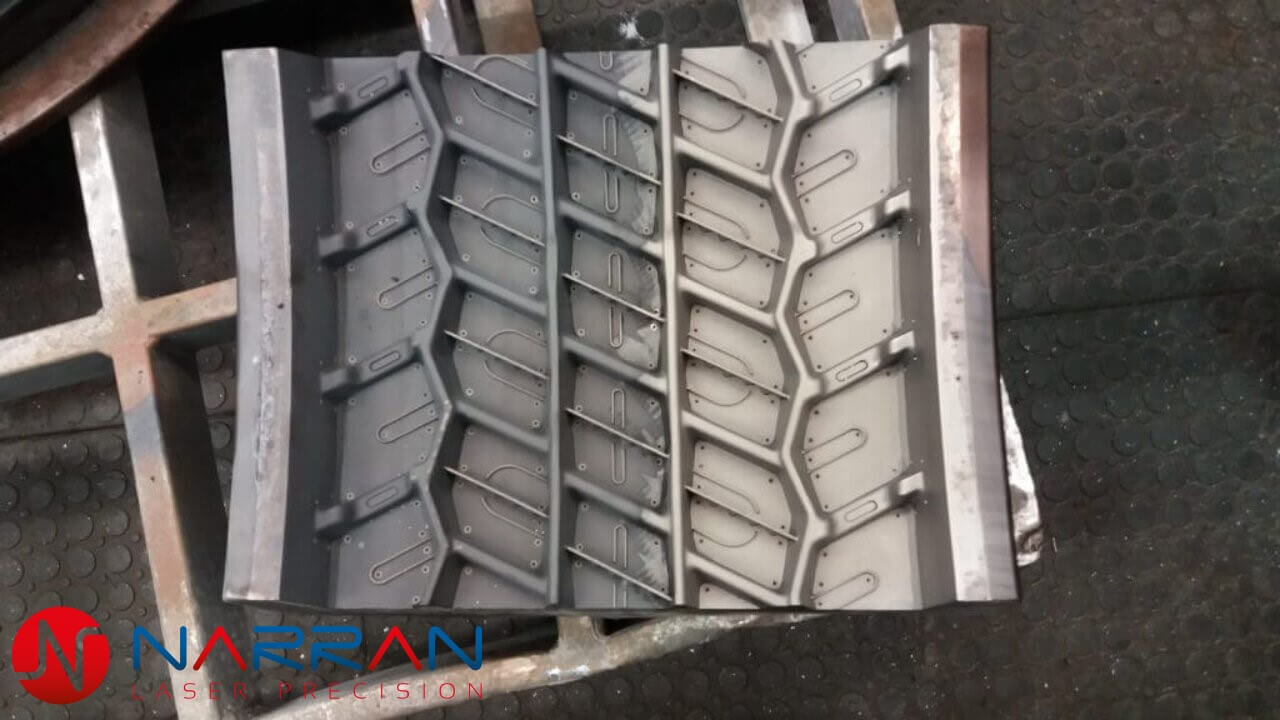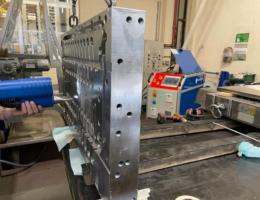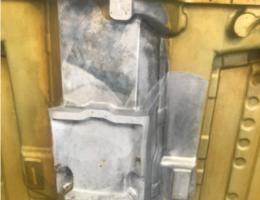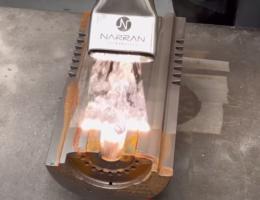Laser cleaning of industrial moulds
Laser mould cleaning covers a wide range of applications, including mould presses, tyre moulds, baking moulds, injection moulds and more.
In addition, the laser solution enables mold cleaning without the need to disassemble and move the mold. Under certain circumstances, our cleaning systems can even perform work at the mold’s operating temperatures, so that once cleaning is complete, no disassembly/reassembly or cooling/warming period is required – minimizing the time lost in shutting down the mold.
HOW LASER FORM CLEANING WORKS
Laser cleaning (laser ablation) – uses thousands of laser pulses per second to absorb contaminants and remove them (vaporization) from the substrate without damaging the base material. With no additional waste and little or no risk when used correctly, laser systems are the ideal solution for cleaning different types of moulds. Laser cleaning has constant quality and an operating life of up to hundreds of thousands of cleaning hours – making it a cost-effective solution for metal and non-metal cleaning.
Benefits of laser mould cleaning
Laser mould cleaning has several advantages. The most common include:
LASER CLEANING OF COMPOSITE FORMS
Laser cleaning technology is particularly effective in cleaning large moulds/tools used for the production of carbon fibre/glass reinforced plastic CFRP/GRP composites. Current research shows that moulds made of nickel, steel, aluminium and high strength steel can be cleaned efficiently by laser without damaging the base material.
The method is currently being promoted as the most cost-effective mould cleaning option in the aerospace industry. Compared to, for example, ice pellet blasting, laser cleaning is significantly easier to automate, very quiet and up to 15 times faster. In addition, the laser method takes place without the need to clean process and abrasive residues.
Glass mould cleaning
Glass moulds have very specific cleaning requirements. Among the most important problems in cleaning moulds are:
-
- There should be no increase in volume of, for example, bottles. Therefore, the base material must not be affected.
- Closing edges must be preserved to avoid burrs.
- Many small openings can be found in glass moulds to ensure air access. Laser cleaning will ensure that these openings are well cleaned and of course no residue remains.
LASER CLEANING INVAR
Moulds made from INVAR, nickel, steel, aluminium and high strength steel can be effectively laser cleaned without damaging the base material.
Our systems are not only effective, but this technology is also the most cost-effective and one of the fastest alternatives for mold cleaning in the aerospace industry.
CLEANING INJECTION MOULDS
Laser mould cleaning is an excellent way to clean and sterilise moulds because it allows moulds to be cleaned at source – without the need to dismantle parts, lose time in transit and risk damage. In addition, if we have a large enough opening, cleaning can be carried out at operating temperatures, which means that no cooling time is required, reducing the amount of machine downtime required.
The solution can be either manual or automated – whichever works best depends on the operational needs.

LASER CLEANING OF TIRE FORMS
Tyre moulds are an important part of the car manufacturing process. However, after a few days of use, dirt can start to build up on the moulds. This not only destroys the tire finish, but can slow down the manufacturing process. Laser cleaning helps to remove dirt without damaging the molds’ substrate, so you can streamline tire production while extending the life of your product. Laser cleaning solutions range from manual to automated options:
- Flexibility of use for different mold and profile geometries.
- Lower operating costs – compared to media blasting options.
- A noiseless alternative that won’t damage your mold.
- Easy-to-use solution where spacing constraints exist.

LASER CLEANING OF PVD TOOLS
Plasma Vapor Deposition (PVD) coating applications are becoming increasingly important in modern surface treatment technology. During the process, however, the applied coating not only adheres to the target surface, but also collects on surrounding materials, including the tools and fixtures used to hold the parts in the reaction chamber.
Over time, excess PVD coating materials lead to undesirable effects such as reduced tolerance of workpieces with poor chamber sealing, resulting in increased moisture and increased heating time.





